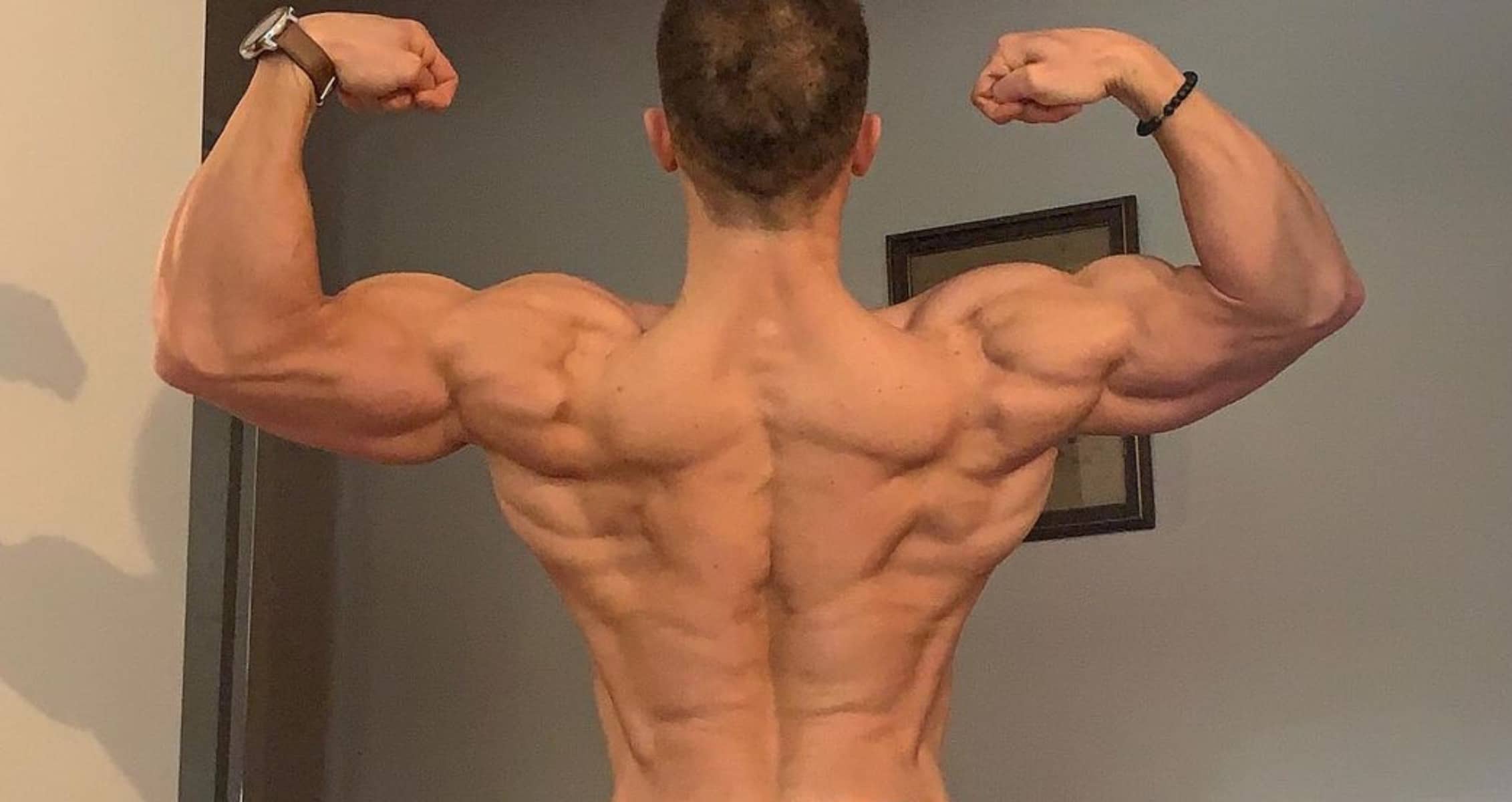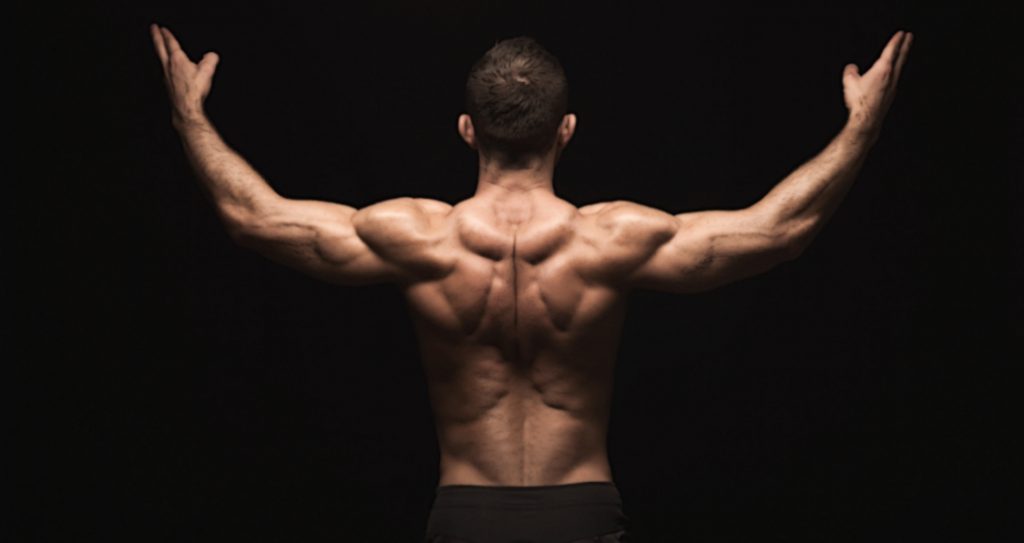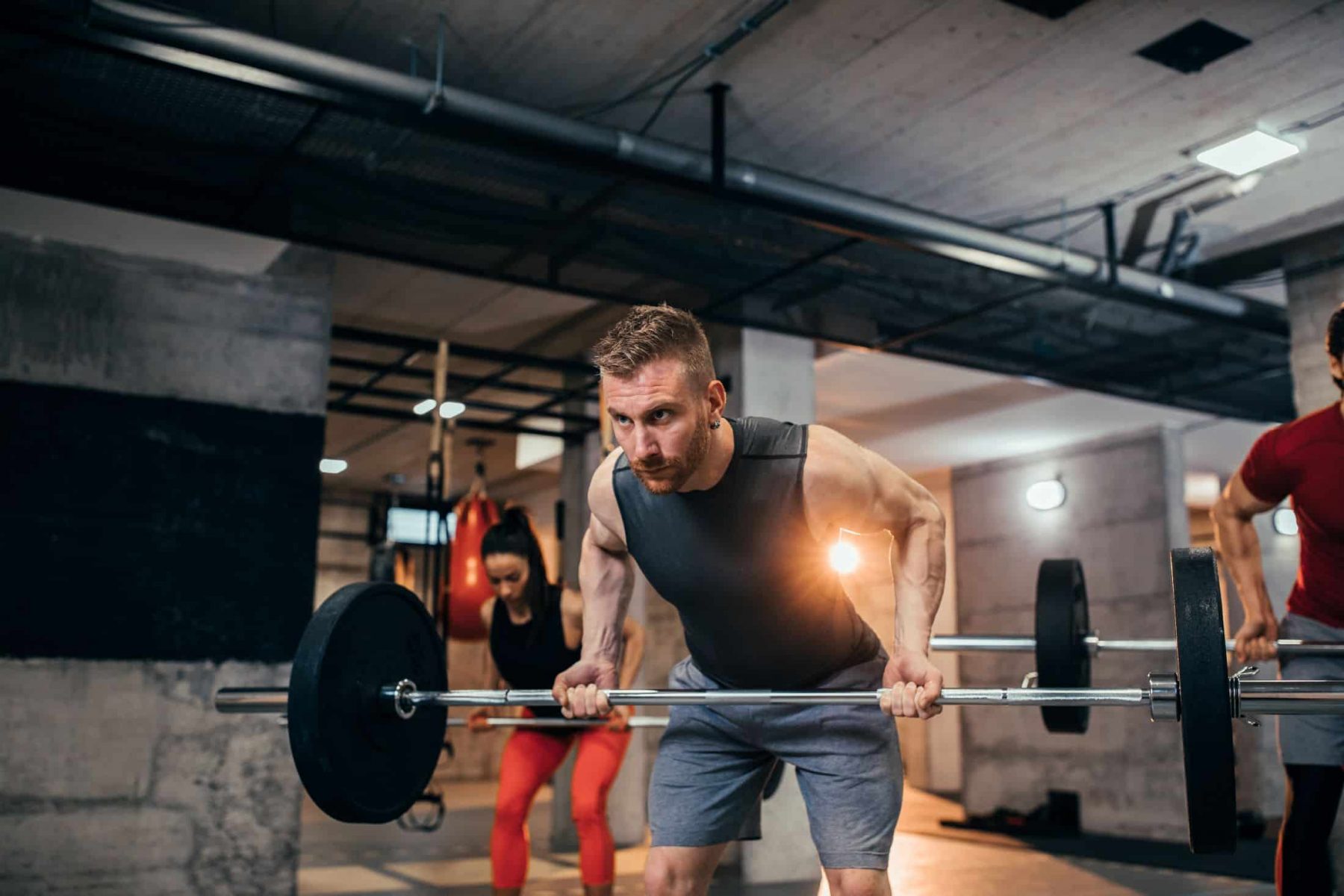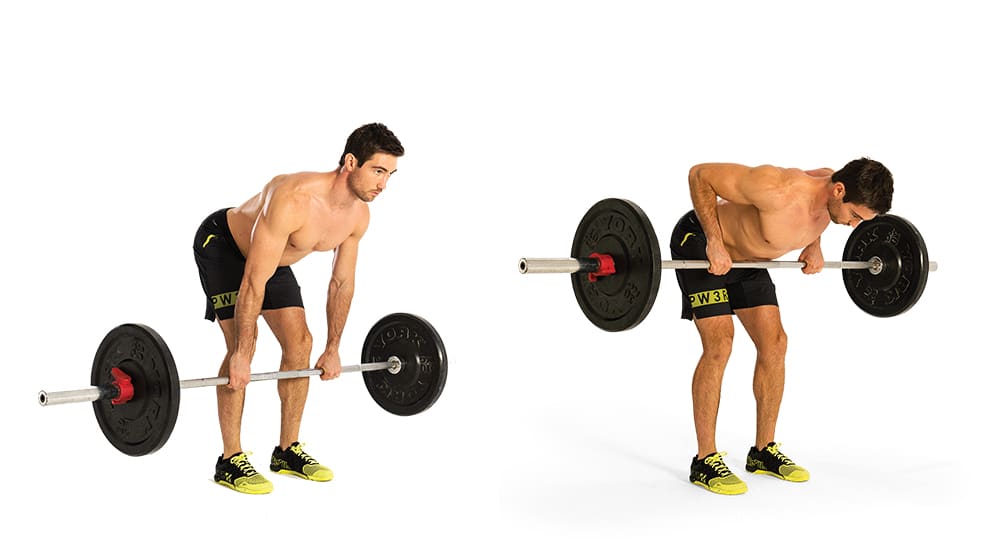Developing A Strong And Healthy Back
For many, the muscles of the back are neglected and underused which can lead to problems with posture and consequent discomfort or pain (1). In the modern world, many work at a desk and remain seated for prolonged periods of time which can place the back under a great deal of stress and strain. Over time, the shoulders will begin to pull forward thus causing tightness and stiffness in the chest and neck muscles.
Even for those who attend the gym, the back often does not receive as much attention as is perhaps required, whereas the more visible muscles (such as the chest, shoulders and arms) are regularly targeted. This can lead to underdevelopment of the back and can exacerbate any existing back issues. Recent research has highlighted the importance of regular strength training for reducing back pain and preventing back problems (2).
Benefits Of The Barbell Bent Row
There are a number of useful back resistance exercises that can be performed with the barbell bent row being one of the most effective. While it is the latissimus dorsi (lats) which are primarily responsible for this exercise, there are a number of back and shoulder muscles which must engage in order to drive this movement – such as the trapezius, rhomboids, and rotator cuff muscles (3).
Considering the role that each of these muscles play in maintaining good posture, strengthening these muscles will have a substantial impact on posture and movement. Additionally, in the bent position, the core musculature must contract in order to hold the trunk of the body in the correct position (4). Strengthening the core will also contribute to better posture.
Finally, for those who enjoy pressing movements – such as the bench or overhead press – focusing on the bent row may facilitate a greater performance with these lifts while also helping to balance out the upper body muscles symmetrically – both in terms of size and strength. Conversely, having a muscular imbalance can potentially increase the chances of experiencing injury (5).
Barbell Bent Row Form
When performing the barbell bent over rows, it is important to put technique before ego. Loading the barbell with excessive weight is a sure way to compromise form. Instead, keep the weight manageable and focus on the movements required to bring the bar into the body. Controlled movements, which maximally engage the working muscle, are far superior to uncoordinated and wild movements.
To properly execute the barbell bent row, follow the 4 coaching points listed below…
- Place the loaded barbell on the floor. Ensure that the feet are approximately hip width apart. Prior to picking the barbell up, push the chest high and pull the shoulder blades together. Hinge forward and grip the bar using an overhand grip, placing the hands roughly shoulder width apart. Keeping the core tight and back flat, pick the bar up and stand tall.
- From here, focus on pushing the hips back so that the upper body tips forward while maintaining a flat back. Keep a very slight bend in the knees and keep the bar as close to the legs. The bar should be in a hanging position close to the knees.
- Squeeze the core muscles tightly before driving the bar into the area between the chest and the stomach. As you pull, focus on keeping the shoulders down and the elbows as tight as possible to the ribcage. At the top portion of the rep, aim to squeeze the shoulder blades together.
- Once contact has been made, reverse the movement and control the barbell back down to the original starting position. Remember to keep the core contracted as the bar moves to avoid moving out of neutral spinal alignment.
Barbell Bent Row Tips
When performing the row, instead of thinking about pulling the bar up to the chest, focus on pulling the elbows behind the body. This will do two things – firstly, it will help to activate the right muscles, specifically the lats, and secondly it will facilitate a better rowing motion.
Another practical tip for the bent row is to pause briefly at the top of the movement and focus on maximally squeezing the shoulder blades together. Once again, this will lead to a greater activation of back and shoulder musculature and have a profound effect on posture and overall back health.
Barbell Bent Row Variations:
Underhand Grip Barbell Bent Row
The only difference between this variation and the conventional bent row is the grip on the bar. Instead of an overhand grip, this variation uses an underhand (supinated) grip. This places more stress on the lats and lower traps.
Pendlay Row
The Pendlay row involves rowing the bar off the floor instead of from a static hanging position – other than this, the form is identical. To get into the position for this row, the trunk must assume a more parallel position and therefore requires a great degree of hamstring flexibility. As a result, many may find getting into this position, all while maintaining a flat back, quite challenging.
Yates Row
For the Yates row, a more upright stance must be assumed so that the trunk is approximately angled 30-40° from the floor. As a result of this position, the bar will travel to the lower abdominals instead of the sternum when rowed. Once again, this will predominantly target the lats and also the mid to low traps.
One Arm Barbell Row
For the unilateral barbell variation, stand side on to the barbell and use a neutral grip (palm facing the body). Look to pick up the bar near the plates, assume the conventional rowing position and complete full repetitions.
Dumbbell Bent Over Rows
The dumbbell variation of this exercise is a superb way of balancing out the strength of both sides. With a barbell row, the stronger side can begin to dictate the movement, whereas with the dumbbells, both sides must work individually to drive the weight upward. A secondary benefit is that dumbbells also require a greater amount of control and stability which places a large demand on the core muscles (6).
One Arm Dumbbell Row
A simple variation on the dumbbell row is a single sided row. For this variation, place the left hand and knee on a bench for stability and row from the right side, ensuring to maintain control and squeezing the muscles around the shoulder blade. Once a number of reps have been completed, swap sides and repeat.
Dumbbell Incline Row
For those who find it difficult to maintain a flat back during the row, use an incline bench, lie directly on top of it and let the dumbbells hang. From that position, row as normal ensuring that the chest stays in contact with the bench at all times.
Bent Over Flyes
For the final variation, assume the rowing position while holding two dumbbells. However, instead of rowing, keep the arms straight and drive the dumbbells out to the side of the body while focusing on pulling the shoulder blades together.
Final Word

The need to perform back strengthening exercises is very great for so many as it can effectively prevent dysfunction, pain and injury. There is no doubt that the bent row is one of the best exercises that can be performed for building back strength and maintaining overall health.
For more news and updates, follow Generation Iron on Facebook, Twitter, and Instagram.
References:
1-Services, Department of Health & Human. “Posture”. www.betterhealth.vic.gov.au.
2-Westcott, Wayne L. (2012-7). “Resistance training is medicine: effects of strength training on health”. Current Sports Medicine Reports. 11 (4): 209–216. doi:10.1249/JSR.0b013e31825dabb8. ISSN 1537-8918. PMID 22777332.
3-Edelburg, Holly (September 29, 2017). Electromyographic analysis of the back muscles during various back exercises
4-Fenwick, Chad M. J.; Brown, Stephen H. M.; McGill, Stuart M. (2009-3). “Comparison of different rowing exercises: trunk muscle activation and lumbar spine motion, load, and stiffness”. Journal of Strength and Conditioning Research. 23 (2): 350–358. doi:10.1519/JSC.0b013e3181942019. ISSN 1533-4287. PMID 19197209.
5-Knapik, J. J.; Bauman, C. L.; Jones, B. H.; Harris, J. M.; Vaughan, L. (1991-1). “Preseason strength and flexibility imbalances associated with athletic injuries in female collegiate athletes”. The American Journal of Sports Medicine. 19 (1): 76–81. doi:10.1177/036354659101900113. ISSN 0363-5465. PMID 2008935.
6-Saeterbakken, A.; Andersen, V.; Brudeseth, A.; Lund, H.; Fimland, M. S. (2015-11). “The Effect of Performing Bi- and Unilateral Row Exercises on Core Muscle Activation”. International Journal of Sports Medicine. 36 (11): 900–905. doi:10.1055/s-0034-1398646. ISSN 1439-3964. PMID 26134664.











